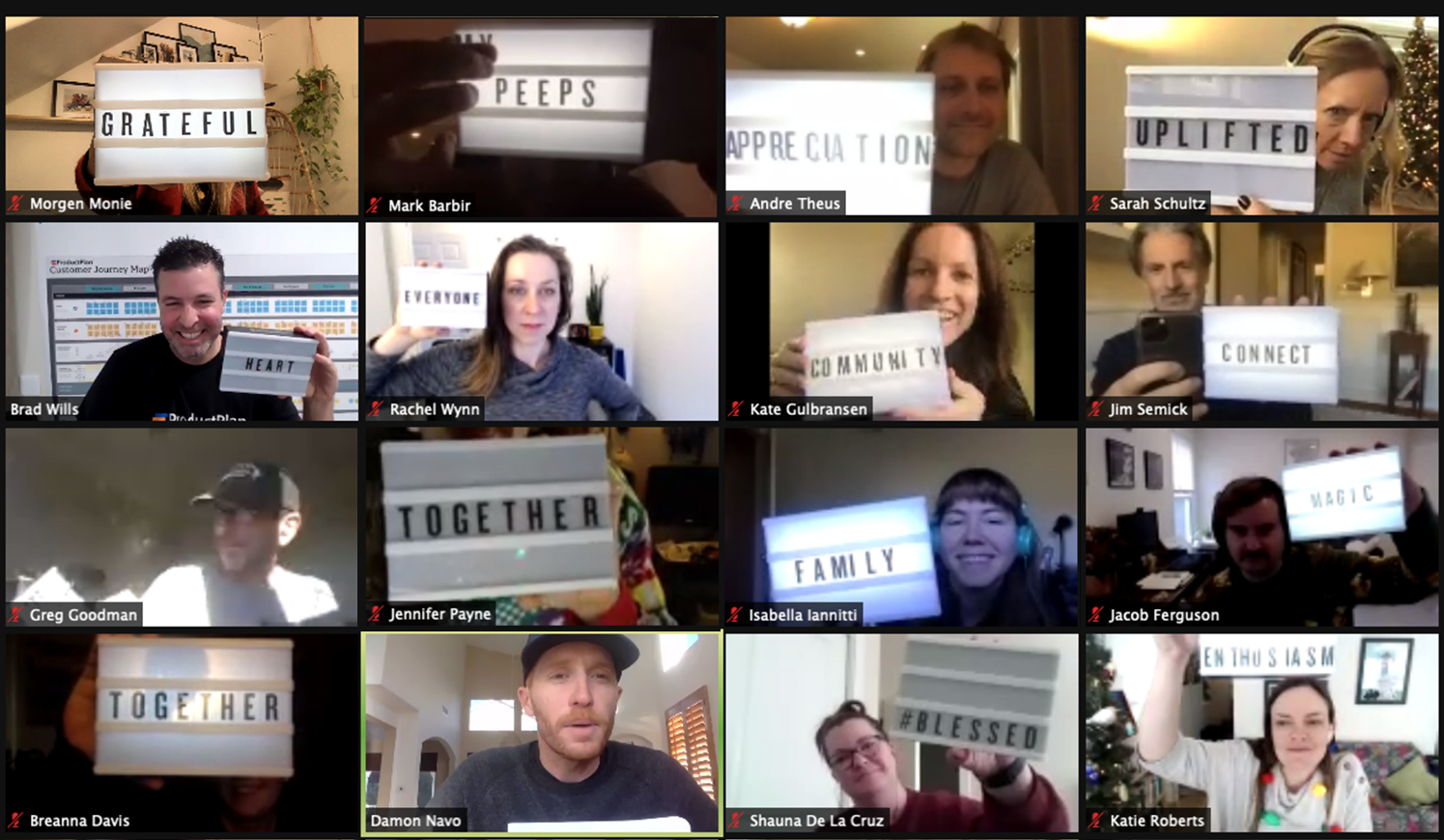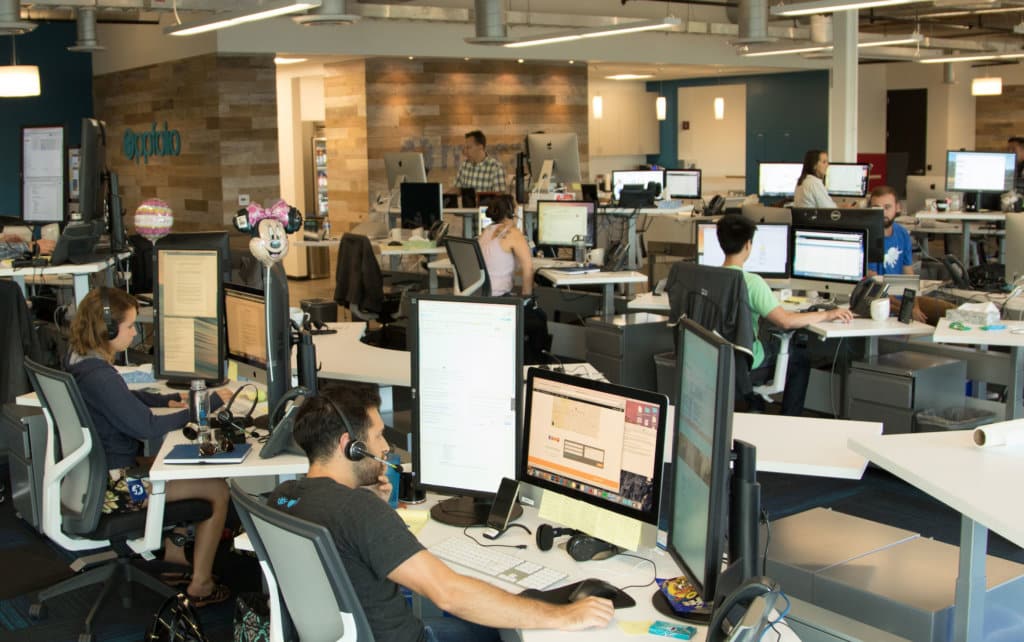When you think of company-sponsored events, a few scenes may come to mind. There’s the holiday party where coworkers schmooze over food and drinks, be it in the office kitchen or at a fancy hotel with significant others in tow. There are fun activities where silos are temporarily broken down, giving way to bowling matches or scavenger hunts. And there is, of course, the company all-hands meeting where leadership shares future direction and celebrates past achievements. These everyday work rituals translate poorly for the new normal of remote work and often result in a negative experience.
When your team participates in video calls all day, the idea of an extended virtual gathering may fill your team with dread.
Here at ProductPlan, we believe we’ve cracked the code on making these events fun, engaging, informative, and meaningful. We wanted to share our experience and inspire others to plan or improve their own virtual events.
Why Events Matter to Your Team
Rituals and stories create a team identity.
Ritualized gatherings build a cultural heartbeat and team identity. Gatherings are a huge part of life, and they’re a part of the human experience. But the time we spend in them is often underwhelming and uninspiring. Invest the time, energy, and attention-to-detail to make them great.
Humans are story-seeking creatures. One key to great events is creating a shared experience that generates stories your team can tell months or years from now.
It’s rare to go to a conference or a social gathering and find that the event organizers have given serious thought to how guests will connect and get something meaningful from the event. We tend to focus on the mechanics like Powerpoints and Zoom logistics more than we think about people and human connection. Thinking about the connections that can result in storytelling is where the “magic moments” exist.
Gatherings help build trust in relationships.
Interacting with our peers creates empathy and humanizes our coworkers, building trust. They’re not just an email address or a Slack handle, or a voice on video chat. They’re real people with homes and pets, and families, trying to pay their bills, have a little fun, advance their careers, and do interesting work. This is particularly true for cross-functional relationships where conflict may commonly arise.
Gatherings build flexibility, grace, and resilience in your team relationships. Team members are less likely to judge or jump to conclusions once we build deep connections through effective events.
Our humanity is reinforced via these interactions – especially face-to-face. Whether at the coffee station, small talk before a meeting starts, or riding in the elevator together. These micro-interactions are a huge part of our relationships in an office environment. When distance reduces or eliminates those casual exchanges, intentionally create similar opportunities for similar interactions to happen.
Doing so not only leads to increased social contact (and the corresponding mental health benefits) but also helps people work better together.
The more familiar you are with a coworker, the better you’ll understand their communication styles, motivations, and concerns, which leads to more productive interactions where people don’t stick to niceties.
How ProductPlan’s ‘Fest’ Started
Like many programs at ProductPlan, “Fest” began in our Engineering department, which was remote long before a global pandemic. For five years, Fest was a semi-annual engineering event and was an opportunity to give face-time with the entire remote engineering team within our Santa Barbara office. This eventually evolved into a full-fledged cross-functional event to create alignment across ProductPlan.
Each discipline developed tracks on exciting topics. It became a shared experience and tradition that forged deeper relationships among employees. Those connections lead to grace in their business interactions instead of everyone jumping to their own conclusions.
While ProductPlan had an advantage as Fests began pre-COVID-19, there’s no reason other organizations can’t make these types of virtual gatherings a success starting from scratch.
You can use elements of past in-person events as the springboard for planning a new virtual gathering. Carryover activities and sessions that translate well to a remote environment while also using some new virtual activities.
7 Lessons from ProductPlan Virtual Event Success
1. Do your research.
We began the planning process by conducting an employee survey to tease out key themes that spoke to the new remote team’s needs and combine feedback themes from our previous on-premise events.
This helped us identify which tracks would be popular and relevant to the team’s needs and which external speakers would be a good fit. It also reassured us that employees wanted to participate in the event versus begrudgingly attend.
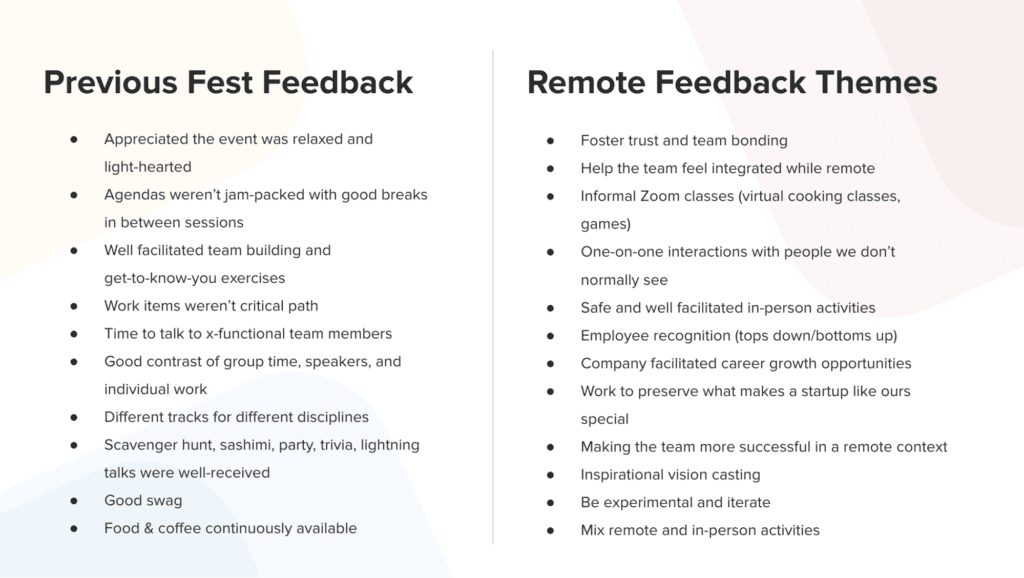
Develop a Clear Purpose and Shared Assumptions.
Our synthesized goals became clear based on our collective team feedback. First, we needed to create an aspirational vision and alignment coming into 2021. Secondly, the agenda had to be dedicated to team-building activities. Lastly, we needed to figure out how to provide opportunities for professional development.
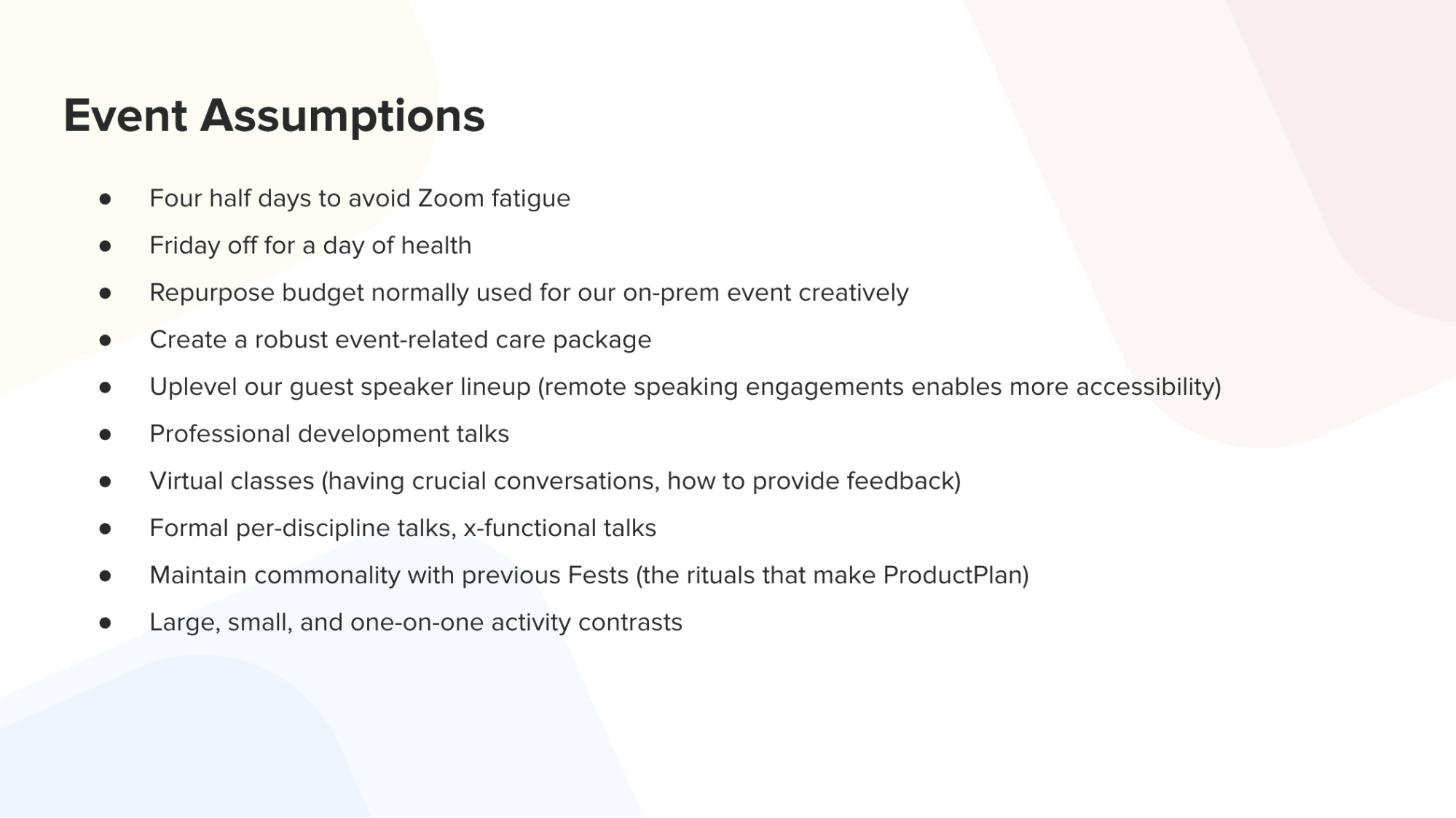
2. Hosting intentionally is more important than being laid back.
In modern life, being chill is often treated as a virtue. As a result, we’re hesitant to tell people what to do, even at events we are hosting ourselves. Being laid back, not imposing on our team members feels like the right thing to do.
But when it comes to gatherings, being a “chill” host is an abdication of your responsibility to your gathering and guests, and it’s a sure-fire way to let things fizzle out. Feel empowered to be hands-on and drive because it will only serve to create a better event.
Build up anticipation and excitement.
Recognize that your team will form impressions about what to expect from your event before it’s even started. So prime them with the right expectations. ProductPlan intentionally provided a “drip” of the agenda each day to foreshadow and build excitement for the event.
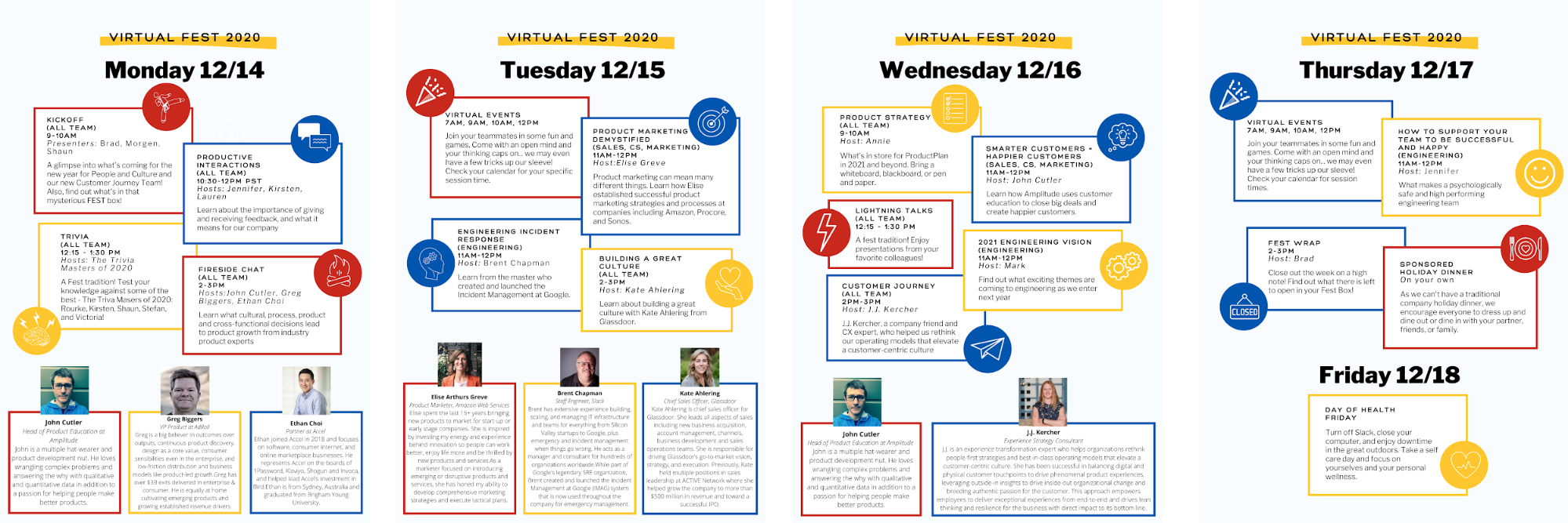
Start and end on a high note.
A strong start and solid finish are also key to a great gathering. You want everyone to be pulled in immediately, so think high energy to kick things off. Then save the best for last, so your team goes out on a high note.
Incorporate physical elements in the virtual event.
A principle in executing great gatherings is honoring team members on arrival. What a better way than providing a “mystery box” full of surprise gifts, some related with portions of programming with “don’t open” stickers to make sure the element of surprise and anticipation was maintained throughout the event.
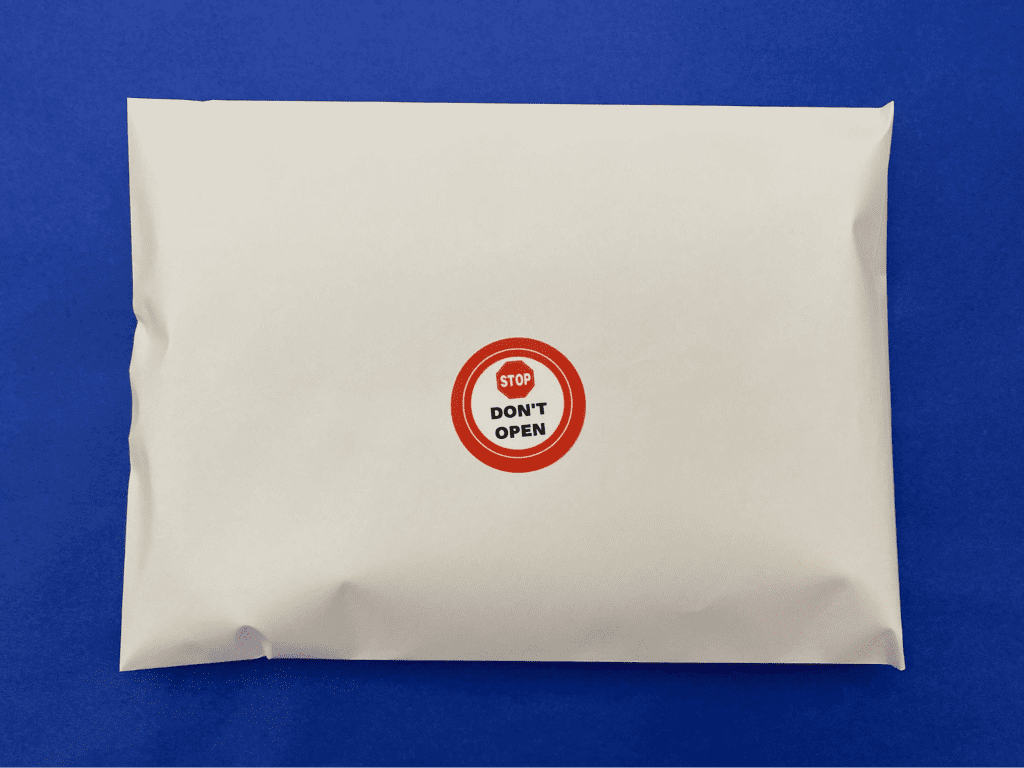
Our mystery box was a vessel to tie us together in the virtual world and made our event more special. Other items included new ProductPlan swag for the team to enjoy, materials required for our fun events such as a deck of cards, gummy sushi candy (-a special homage to our in-person fests tradition in which we usually enjoy a full table of sashimi), and a lightbox to share our collective experience.
3. Shift expenses to provide new opportunities.
Because we knew the event would be virtual, we wouldn’t have some traditional expenses to worry about. We would not need to rent meeting space or provide food and drinks all day long (although we did give employees gift cards to order in). This let us spend a little more in other areas, such as investing in our guest speakers’ quality from around the world!
4. Incorporate dead space.
We did a survey, and that pulled themes out of the needs of remote workers. For instance, Zoom fatigue is a thing – People only have so much tolerance for videoconferencing. So instead of spending all day on Zoom, we took a different approach.
We elected to limit the event to four half days with Friday off. This less-is-more approach ensures you’ll get everyone’s best versus a raging case of Zoom fatigue.
5. Provide quality and contrasting content.
The latest Fest agenda focused on career development. It was important to employees and a way to show that management cares about them as people and not just the role they currently fill. We included many great external speakers, including CEOs and executives from other companies, product management thought leaders, authors, and executive coaching consultants.
6. Leave room for fun.
This formal agenda was augmented with some fun, including trivia contests, magic shows, and escape rooms. We include a fireside chat with our leadership team and breakouts for each discipline. It added up to a half-day full of great content that employees rated highly in their post-event survey responses.
7. Be ready to adapt.
Never be afraid to change things up if your formula or adjust the event elements as you go.
Room For Improvement
There is always room for improvement. Approaching each event as the next one in a series creates a growth mindset for everyone. That said, we do have some things we wish we’d done differently and a few more suggestions for a successful virtual event.
1. Become even more inclusive.
Our team spans across multiple time zones, and we didn’t do the best job of making sure it was convenient for everyone to attend. Try to find the best overlap opportunities for most participants. Although for a truly global organization might not have had other options. If you really need to, you could also have special sessions for employees too distant to take part and record some of the content they can’t access live.
As previously mentioned, feel free to “call an audible” when needed. Whether it’s a session running long or one that doesn’t resonate with the crowd, it’s OK to shake up the agenda on the fly. The most important thing is an engaged audience, not the schedule.
2. Include more bonding time.
Build-in breakout sessions, so people get a chance to participate one-on-one or in smaller groups. While some staff may feel comfortable speaking in front of the whole company, others may prefer a smaller venue. Plus, it helps make sure everyone gets a chance to contribute to conversations.
3. Perform a retrospective.
The post-event survey is a definite must-have to continue improving and iterating on the event while it’s still fresh in their minds. Perform a retrospective on the virtual event to improve the next event and talk to the other organizers about what worked and didn’t. Create benchmarks from event to event to measure whether or not you are improving the planning and facilitation
You can compare their responses to those conducted during the planning stages to see if what people asked for was what they actually enjoyed. The next virtual event will be halfway planned with some good feedback before you’ve finished rehashing this one!
